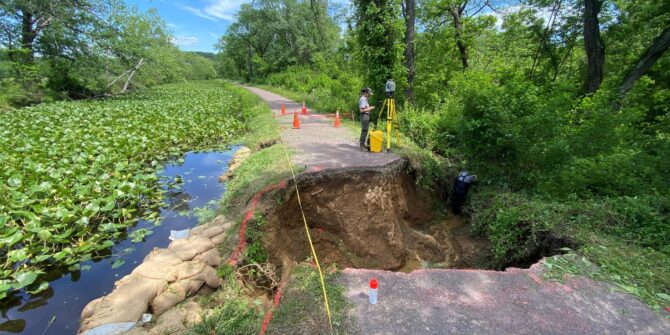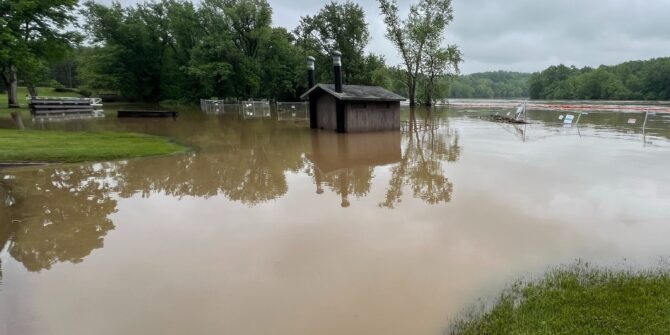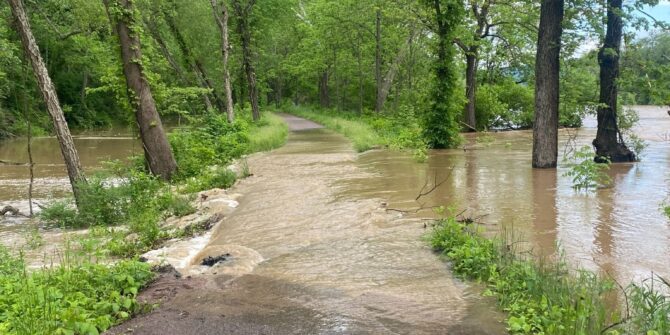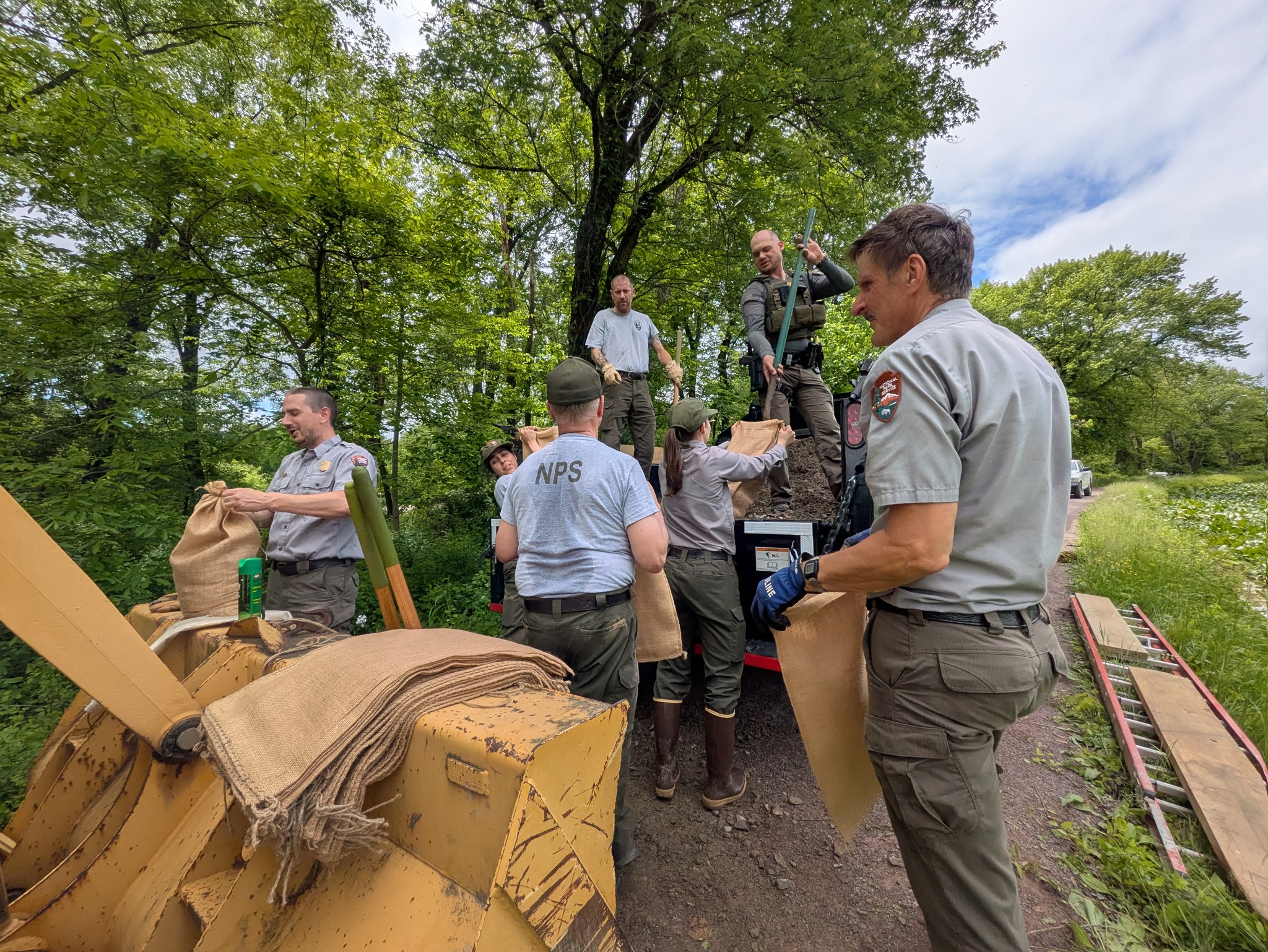The C&O Canal is a testament to American ingenuity and commitment, withstanding flooding, heavy visitor usage, and the test of time. To keep the park safe, beautiful, and welcoming, it has taken the dedication of National Park Service staff, hundreds of volunteers, donors, and community partners. Recently, from May 14 to 16, the park faced a significant flood event that caused damage and debris due to high waters and strong winds. Many picnic areas, trails, and campgrounds were affected, including a section of the towpath that washed out. While it’s disheartening to witness the park’s damage, this flood event is just one of many from which we have and will recover.



Situated in the floodplain of the Potomac River, the park experiences a major flooding event every 12 – 13 years. Flooding has always been a part of the Potomac River Valley’s life cycle, creating habitats like floodplain forests and scourbars that make the park so special. The C&O Canal has centuries of experience recovering from high water events, including flooding from Hurricane Agnes in 1972. During that storm, it was estimated that enough rain fell to raise the water level by two feet across the vast 2,500-square-mile Chesapeake area. More than 200,000 trees had been ripped from the park, and 66 miles of towpath were damaged by the storm. Prior to Hurricane Agnes, significant floods also occurred in May 1889, November 1985, January 1996, and March 1936, the largest flood on record in the Potomac Valley. In the 1936 flood, water levels reached at least 10 feet at Lock 21, 48.6 feet at Williamsport, and 29 feet at Cumberland, causing extensive destruction to homes, roads, and bridges.
Each recovery from past floods has been unique, yet the C&O Canal continues to endure as a place for recreation, relaxation, and respite. This flood will be the same; the park will be restored to the full 184.5 miles we know and love. As park staff work to make repairs and restore safe access to the towpath, we rely on our canal community to support these efforts. Volunteer assistance, fundraising initiatives, and community collaboration will be critical to supporting the park in completing these necessary repairs and preparing for future extreme weather events. Most importantly, the restoration process will require planning, coordination, and time from our National Park Service partners to repair the park, and we ask for your patience and grace as we rebuild. Our park’s story is one of collective resilience and would not be possible without your support.
Photo by National Park Service

